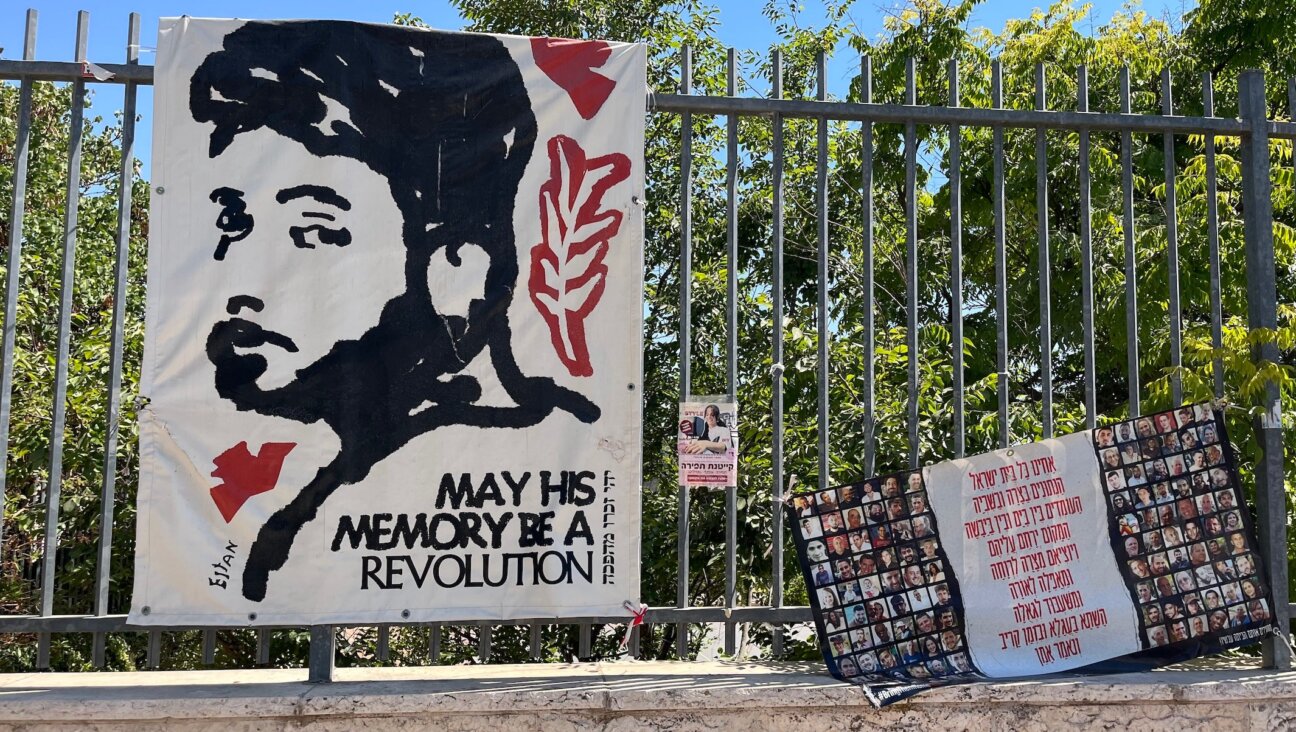Upside-Down Coffee
Adam Chanes of New York City, who at age 11 is probably the youngest person ever to address a query to this column, recently returned from a vacation in Israel with his parents. While he was there he asked me why, when Israelis order coffee in a café, they often ask for kaffei hafukh, which means, literally, “upside-down coffee.”
My first thought was to say to Adam:
“Kaffei hafukh is what Americans — at least since Starbucks came along — would call a café latte. Generally, you make a latte by adding steamed milk to a cup of espresso, but there are people who pour the milk into the cup first and add the espresso afterward. Probably that’s the way it was once made in cafés in Israel, and since the coffee was added to the milk, and not the milk to the coffee, it was called ‘upside-down coffee.’”
But later, when I ran this explanation by my Israeli-born daughter, who is a coffee lover and maven, she pooh-poohed it. “In the first place,” she said, “what you get in Israeli cafés today when you ask for a kaffei hafukh is usually a cappuccino and not a latte — and no one ever makes cappuccino by pouring the milk first. And secondly, kaffei hafukh is an old expression in Hebrew. It must go back to a time when espresso machines didn’t exist in Israel, decades before drinks like cappuccino and café latte started appearing in Israeli cafés. If you ask me, kaffei hafukh got its name not from the order in which the coffee and milk were poured but from their proportions, and it must have referred to neither a latte nor a cappuccino but a café au lait.”
“What’s the difference?” I asked. Being a coffee lover, too, but obviously not a maven, I had always assumed that café latte and café au lait were simply the Italian and French terms for the same thing.
“Café latte,” my daughter explained, “is like a cappuccino, with more milk and less foam added to the espresso. In both of them, the milk is made to foam in a special steamer, and unless you’re willing to do without the foam entirely on the latte, the milk has to be added last to it, too. But café au lait isn’t made with espresso or an espresso machine at all. It’s made with brewed coffee, prepared in a drip coffee maker, and the milk isn’t steamed. It’s scalded in a saucepan on a stove — that is, brought to the boiling point without letting it boil — and mixed with the coffee, usually with more milk than coffee. There’s no foam, so it doesn’t matter in which order you pour them. Some people even pour both at the same time. Kaffei hafukh probably started out as café au lait and was called ‘upside-down’ because it had more milk than coffee in it, not because the milk was poured first.”
“But you said that kaffei hafukh in Israel today is cappuccino and not café au lait,” I protested.
“Yes,” my daughter said. “Unless you’re served a latte instead. The coffee in Israeli cafés is very good, but there’s a lot of confusion about terminology. Cappuccino and latte were never drunk here much before the 1980s. When they began to be, the term kaffei hafukh was transferred to them from ‘café au lait.’”
And so I now had two explanations of kaffei hafukh for Adam Chanes, and I wasn’t sure which was the right one. On the one hand, my daughter is certainly more knowledgeable about coffee than I am. But on the other hand, if the term kaffei hafukh has been around in Israel for a long time, espresso machines have been, also. The expression dor ha-espresso, “the espresso generation,” was already being used in the early ’60s to describe degenerate Israeli youth that preferred spending their time in Tel Aviv cafés rather than making the desert bloom in kibbutzim. Why, then, did it take so long for kaffei hafukh to lose its original meaning?
“Probably because,” my daughter said, “until then, Israelis only drank straight espresso. It wasn’t until the 1980s that they began to travel widely in Europe and to pick up the cappuccino and latte habit.”
That’s when I had an idea. Who was it, I asked myself, who must have first brought the culture of European-style cafés to Zionist Palestine, which until then had been either Eastern European and tea drinking, or Middle Eastern and Turkish coffee drinking? The answer is the German Jews, or “Yekkes,” as they were colloquially known, who began arriving in large numbers in the ’30s. Could it be that kaffei hafukh was a Hebrew translation of a concept that they brought with them from Germany?
I took a German dictionary down from my shelf and looked for verkehrte Kaffee, which is “upside-down coffee” in German. Sure enough, there it was: Verkehrte Kaffee — wenig Kaffee mit viel Milch, “a small amount of coffee with a lot of milk.” My daughter was right. The original kaffei hafukh was café au lait.
And there, Adam, is your answer. Verkehrte kaffee was the German version of the French café au lait; brought to Palestine by German immigrants, it became kaffei hafukh in Hebrew; as long as Israelis drank their espresso exclusively black, kaffei hafukh remained café au lait; when they switched to espresso-and-hot-milk blends, such as cappuccino and latte,* kaffei hafukh* switched with them. When you’re old enough to drink coffee, you’ll taste the difference.
Questions for Philologos can be sent to [email protected].





















